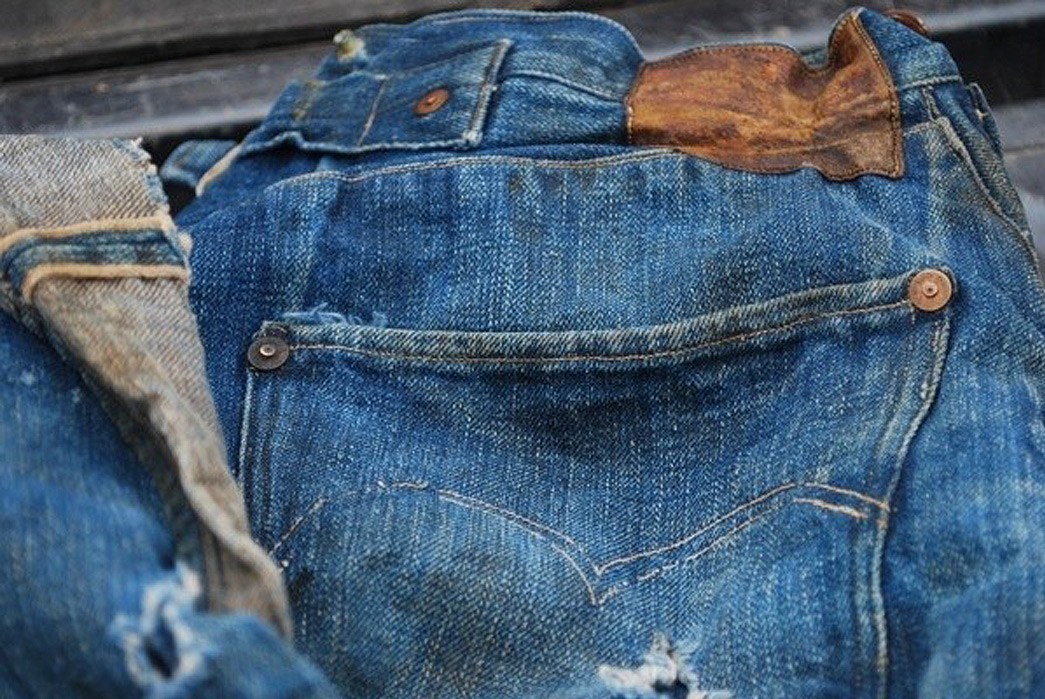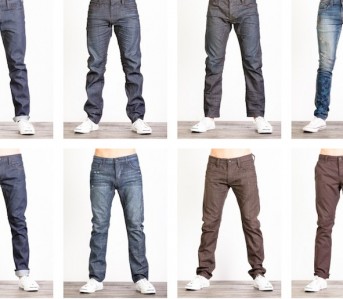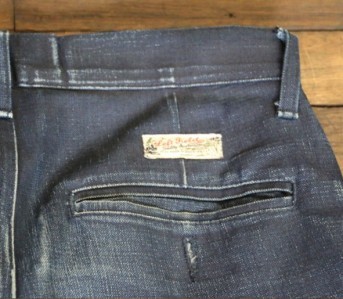I’ve always considered the adage, “they used to make things better” to be a logical fallacy. When you look back at the last century in music, movies, books, cars, clothing, etc., yeah, it’s all fantastic. But the products of the past that we’re aware of today are only the ones good enough to last the test of time.
There was tons of filler and junk at all periods of history, we just have no reason to remember it. For every On the Waterfront or Bridge on the River Kwai there were twenty ham-fisted B movies that have been rightfully forgotten–turn on TCM at three in the morning to see what I mean.
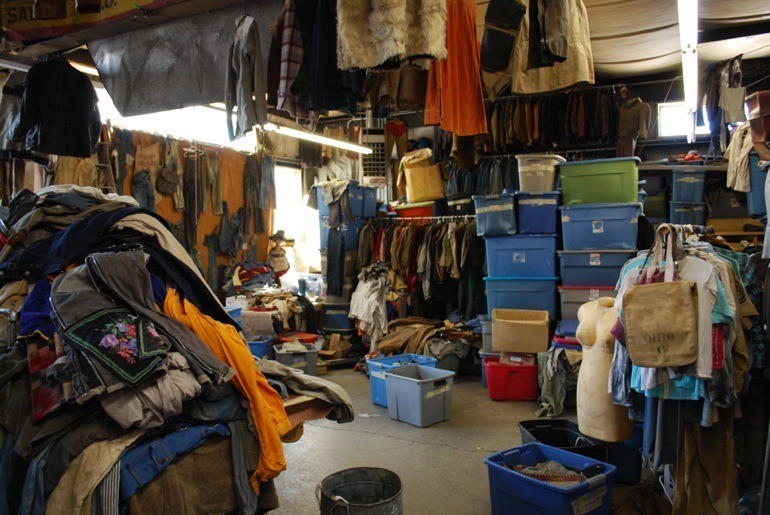
Brit Eaton’s Carpe Denim vintage showroom
However, the one area where the rule actually seems to hold true is vintage workwear. Old denim hunters like Brit Eaton and Michael Harris regularly unearth 125+ year old jeans in wearable condition because the construction techniques and fabrics that composed these early garments are simply better than their modern counterparts.
So if we knew how to make it better then, why don’t we make them better now? The answer is a combination of economic, geographic, and cultural differences between the America of today and the America of the late nineteenth and early twentieth-century.
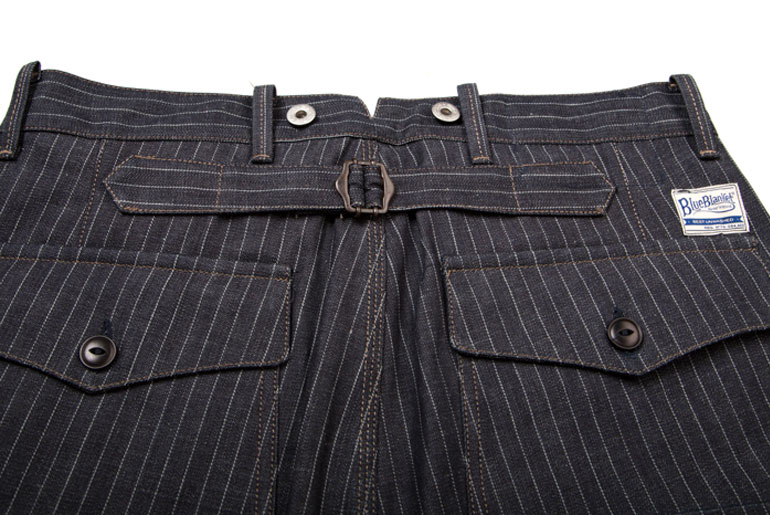
When you only have one change of clothes and work manual labor, that outfit needs to be able to take some abuse. Miners considered clothing like another tool, as they usually bought their apparel in “Dry Goods” stores that stocked jeans alongside nails, pickaxes, and sacks of beans.
They sought pure utilitarian function, hence the smashing success of Levi Strauss and Jacob Davis’s riveted clothing. Workers preferred Levi’s apparel because the reinforced stress points wore harder and lasted longer than traditionally sewn work pants.
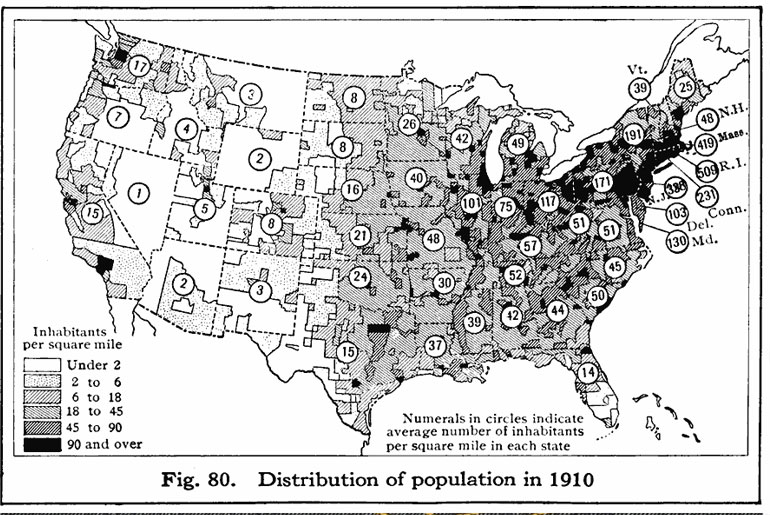
Note the very low distribution of inhabitants per square mile outside of the few city centers. Image courtesy University of San Francisco.
Americans were much more spread out as well, so a busted pair of pants could mean several days of travel and lost wages to replace them. It only made economic sense to buy the best and hardest wearing clothes available even if they cost significantly more.
Average Household Spend
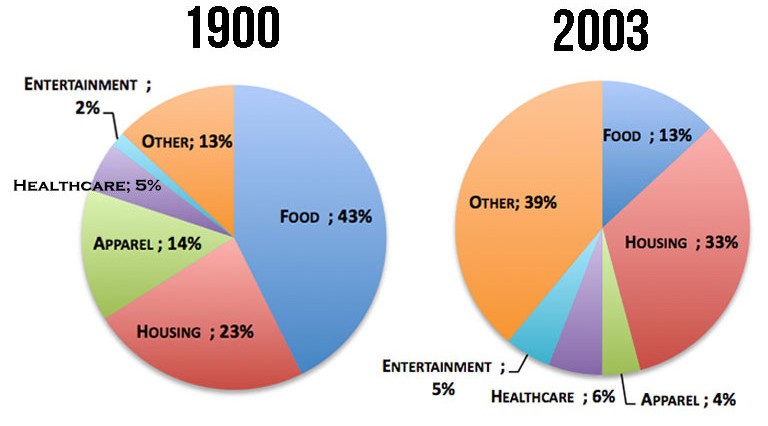
Images and data courtesy The Atlantic
Americans used to spend a lot more proportionally on their clothing than they do today. In the year 1900, the average household spent roughly 14% of their income on apparel, compare that to 4% in 2003.
A logical conclusion from those numbers is old clothing was more expensive, but that’s not the case. In 1875, a pair of Levi’s jeans cost $1.12. That’s about $23 when adjusted for inflation in 2014, and nearly three times cheaper than the $60 501s you’d find at JC Penney.
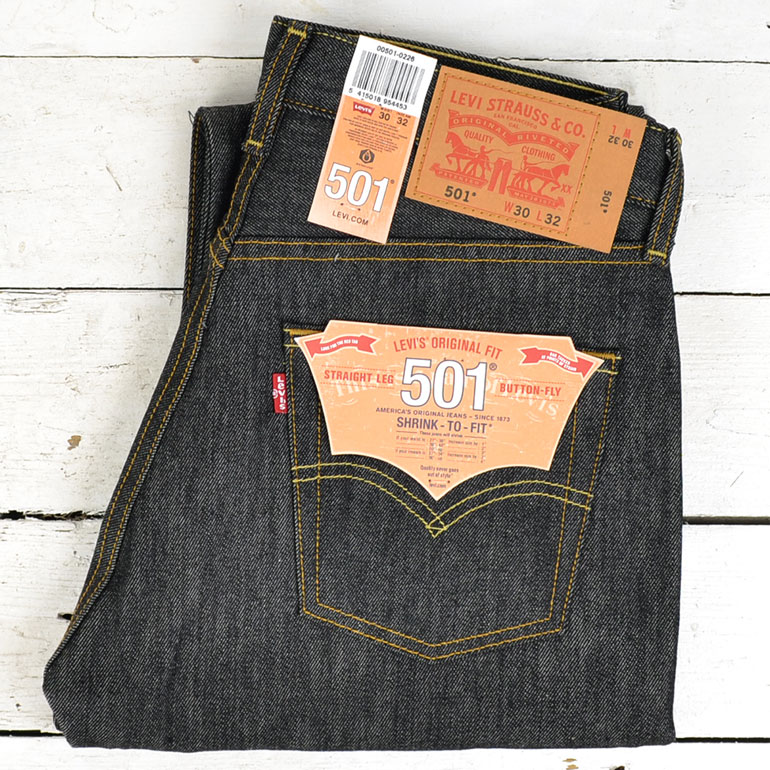
The modern department store 501. Image courtesy Liquor Store Clothing.
Clothes cost more in real dollars, but people today spend less proportionally on apparel because they have way more money to spend. American spending power increased roughly 6800% between 1900 and 2003. By a very rough estimation, those numbers mean modern Americans buy nearly seven times more clothing than they did a hundred years ago.
The majority of Americans have more than one outfit for every day of the week and most aren’t doing anything as laborious as mining gold in it, so durability isn’t nearly as high a priority. Instead of pure utility, the clothing glut allows shoppers to focus on trends, fit, and personal style.
And if the clothes of today fall apart, it’s often cheaper and easier to replace than it is to repair, as 90% of the population lives within a half hour drive of a shopping mall.
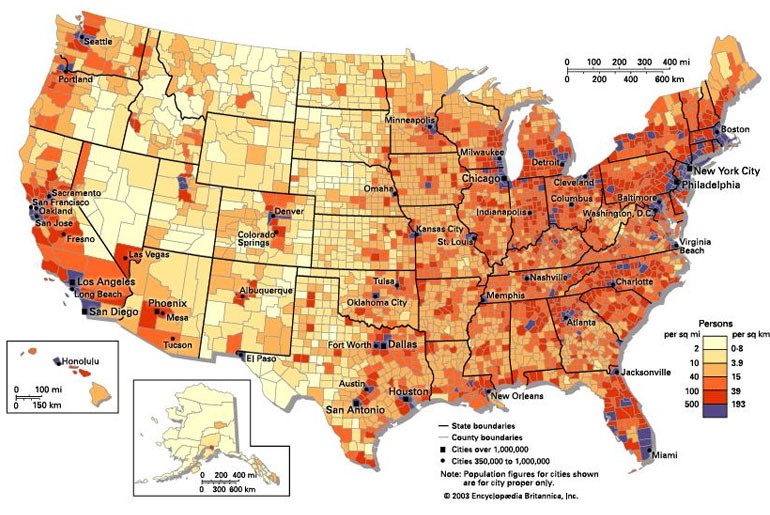
Population density in 2010, the vast majority of residents are clustered around city centers. Image courtesy of Encyclopedia Britannica.
Big brands have catered to these shopping habits. They now manufacture clothing based on the bottom line than on the paragon of quality. Most customers simply aren’t bothered by cheaper, less durable garments.
But just because the high quality manufacturing ways of old are no longer commonplace doesn’t mean they’re lost. There are, of course, a vast array of small denim brands resurrecting the techniques of the past to make garments that are just as hardy as they were a century ago.
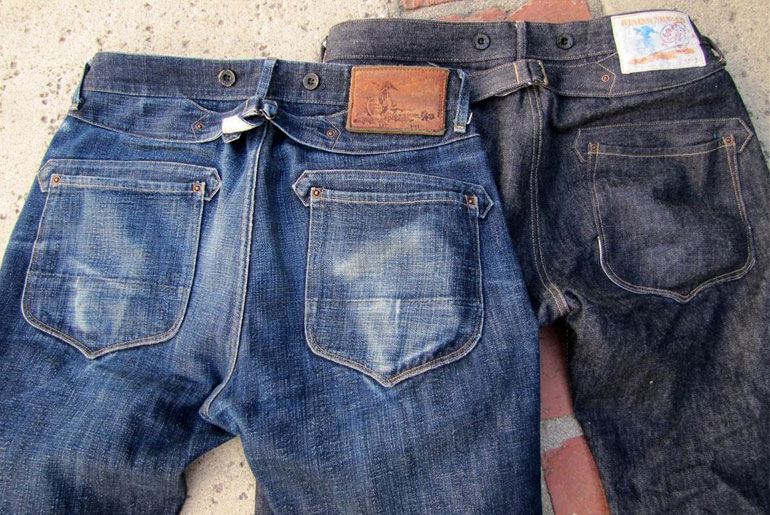
Rising Sun & Co. still strives to make everything with the same level of quality and attention to detail as workwear from a century ago.
But in the churn and burn modern shopping cycle, quality and durability have become a luxury. The times have changed, and it would take a massive shakeup of the entire world’s retail market and workforce to bring things back to the way they were.
Luckily, options beyond vintage clothing shops are still there for those who appreciate well-made goods. You just have to pay a little bit more and look a little harder to find them.

